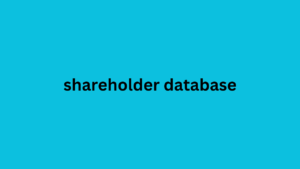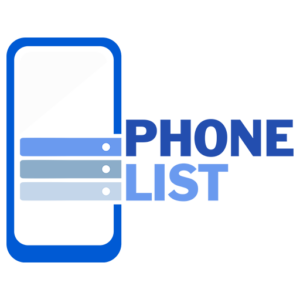In the ever-changing world of digital marketing, there is one aspect that can be a huge determinant of success – the Call to Action (CTA). A well-designed CTA can be the difference between a visitor simply browsing your website and a visitor becoming a loyal customer. In this article, we’ll dive deeper into effective CTAs, exploring strategies that can not only captivate your audience but also increase your conversion rates.
List of contents
What is a Call to call to action yang Action?
Before we dive into the nitty-gritty details of creating an shareholder database effective CTA, let’s start with the basics. What exactly is a Call to Action? In the world of digital marketing, a Call to Action is a trigger or statement that call to action yang encourages readers or viewers to take a specific action. This action can be anything from making a purchase, subscribing to a newsletter, filling out a contact form, or even sharing content on social media.
Why is an Effective call to action yang Call to Action Important?
Why is a Call to Action so vital in the world of digital marketing? In short, it is the driving force that compels visitors to take a desired action. Without a clear and compelling CTA, your website may struggle to convert visitors into customers (conversions), resulting in missed opportunities and reduced revenue. An effective CTA not only increases your conversion rate but also improves the overall user experience on your website.
CTAs are essential for generating leads from your website. Place CTAs in places on your website that have a high percentage of new visitors. The best place for lead generation CTAs is on your blog. Add CTAs at the end of blog posts, in your sidebar, and as floating banners in the corner.
2. Filling out the form
When your website visitors visit a landing page, they still have to fill out a form for you to get their personal data.
At this stage, your visitor is very close to becoming a customer. However, this moment is crucial. To increase the chances of getting that conversion, you better make sure to use the right words and the right button position on the “submit” button of the form.
The purpose of creating a CTA is not only to get leads . CTA can also be used to improve user experience and statistics on your website. The “Read More” button or the “Read More” button can do the job.
If you have a lot of content you want to display on the front page, consider using a “read more” button. This will help visitors choose which content they want to read more about.
4. Product or Service Offerings
Offering and introducing your products or services is definitely one of the reasons for your website’s existence, right?
Make sure visitors can easily find information about the products or services you offer. Use a clear, prominent CTA to direct them to the relevant page.
5. Social Sharing Button
Social media is an effective way to engage with customers. Use CTAs to encourage visitors to share your content.
One simple type of CTA is a social media share button. Place these buttons in strategic places on your website, such as on blog posts and landing pages.
6. Lead Nurturing
If you have potential customers who aren’t ready to buy your product or service, you can use this type of CTA to keep them engaged.
Use these CTAs to promote offers like product demos, free trials, and freebies. Lead nurturing CTAs should be placed in areas where potential leads frequent.
7. Completion of Sale
Once you have successfully acquired leads and nurtured them, the next step is to convert them into customers.
Use this type of CTA to encourage potential customers to buy your product or service right away. You can place this CTA in various locations on your website, such as at the end of a blog post or on a product page.
8. Related Content
The longer a visitor stays on your website, the more likely they are to convert into a lead. Related content CTAs are a great way to guide them from one piece of content to another.
With related content CTAs, visitors can easily continue reading relevant content on your site. This helps them to better understand your product or service.
Also Read: Digital Marketing Terms You Need to Know
Contoh Call to Action
What would be the right words for a Call to Action? If you still can’t imagine it, here are some examples of CTAs that you can use as examples:
- “Register Now to Get 20% Off!”
- “Support This Campaign by Sharing on Social Media.”
- “Learn More About Our Products.”
- “Subscribe to Our Newsletter for Latest Offers.”
- “Start a 30-Day Free Trial.”
- “Click Here to Download Free Ebook.”
- “Register for Our Free Webinar.”
- “Add to Cart Now.”
- “Ask Your Questions to Our Support Team.”
- “Follow Us on Social Media for the Latest News.”
Do you need help increasing website leave your comment below conversions? Want to optimize your CTA? Contact us! MAI is always ready to answer your questions.
How to Create an Attractive Call to Action?
Now that we understand the importance of an effective Call to Action, let’s explore strategies for creating CTAs that can increase your conversion rates:
1. Certainty Is Key
A successful CTA leaves no room for confusion. Use clear, concise language that tells visitors exactly what you want from them. For example, instead of using a vague phrase like “Click here,” choose a more specific, action-oriented phrase like “Buy Now” or “Subscribe Today.”
2. Create a Sense of Urgency
One of the most effective techniques in creating a CTA is to instill a sense of urgency. Encourage your audience to take action right away by using words like “Limited Time Offer” or “Act Now.” This urgency can trigger the fear of missing out (FOMO) and drive conversions.
3. Personalization
Tailoring your CTAs to your audience’s specific needs uk data and preferences can have a huge impact. Use data and analytics to better understand your visitors and create personalized CTAs that resonate with them.
4. Visually Interesting
The design and placement of your CTA is just as important as the text itself. Make sure your CTA stands out on the page with bold colors, contrasting design elements, and appropriate placement,such as at the end of a blog post or on a product page.







